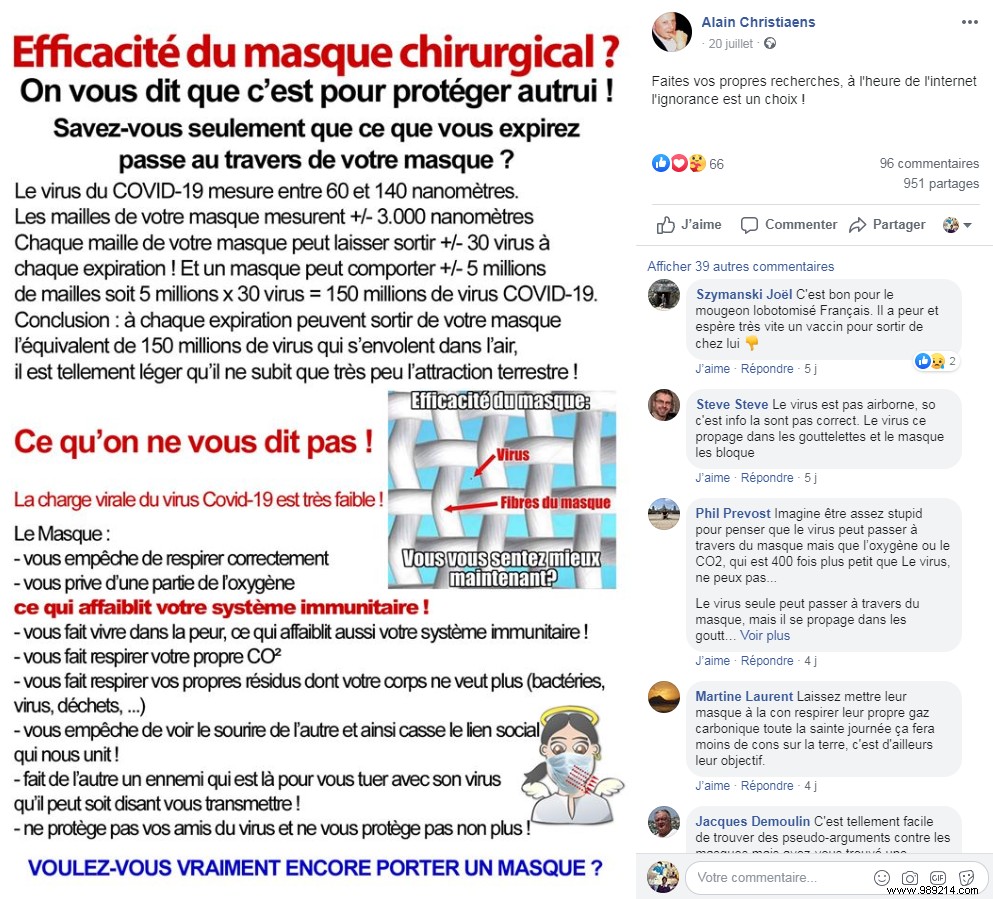Since wearing a mask became compulsory in confined spaces in France, questionable publications abound on Facebook. They believe that the surgical mask is useless since its mesh is too large to trap SARS-CoV-2. This is again fake news intended to deter people from wearing a mask.
Fake news about wearing a mask often mentions a risk of hypoxia or carbon dioxide poisoning. However, others focus on the ineffectiveness of masks against the coronavirus. Since July 20, 2020 and the entry into force of the obligation to wear a mask in enclosed spaces in France, Facebook posts mention meshes that would be too large to trap SARS-CoV-2.
You should know that surgical masks have 0.3 micron holes (µ). These allow wearers to breathe. With narrower holes, the masks would cause difficulties in terms of breathability. However, the fact is that the particles of SARS-CoV-2 measure about 0.12 microns . Thus, it is indeed possible to believe that the coronavirus can pass through the meshes of the masks. What is it really?

“By effect of intermolecular forces, known as Van der Waals forces, when a very small particle such as SARS-CoV-2 encounters a fiber, it definitely sticks to it. The multitude of non-woven fibers increases the chances of collision” indicated the French physicist Jean-Michel Courty in an article published by Le Monde April 13, 2020.
The scientist also believed that the argument about the size of the virus particles and the meshes of the masks was not valid. In addition to the reason given above, the fact is that the virus essentially travels in droplets with a diameter of 5 to 15 microns in diameter ! On the other hand, the medical officer of health Philippe Carenco indicated that the masks lost electrostatic charge. This happens over time or when they get wet. This is the main reason why it is incumbent on you to change your mask regularly.
In May 2020, Hong Kong researchers published a study proving the effectiveness of masks against SARS-CoV-2. It was about tests conducted using hamsters placed in cages. The goal was to understand if wearing a mask could reduce transmission by asymptomatic and pre-symptomatic carriers.